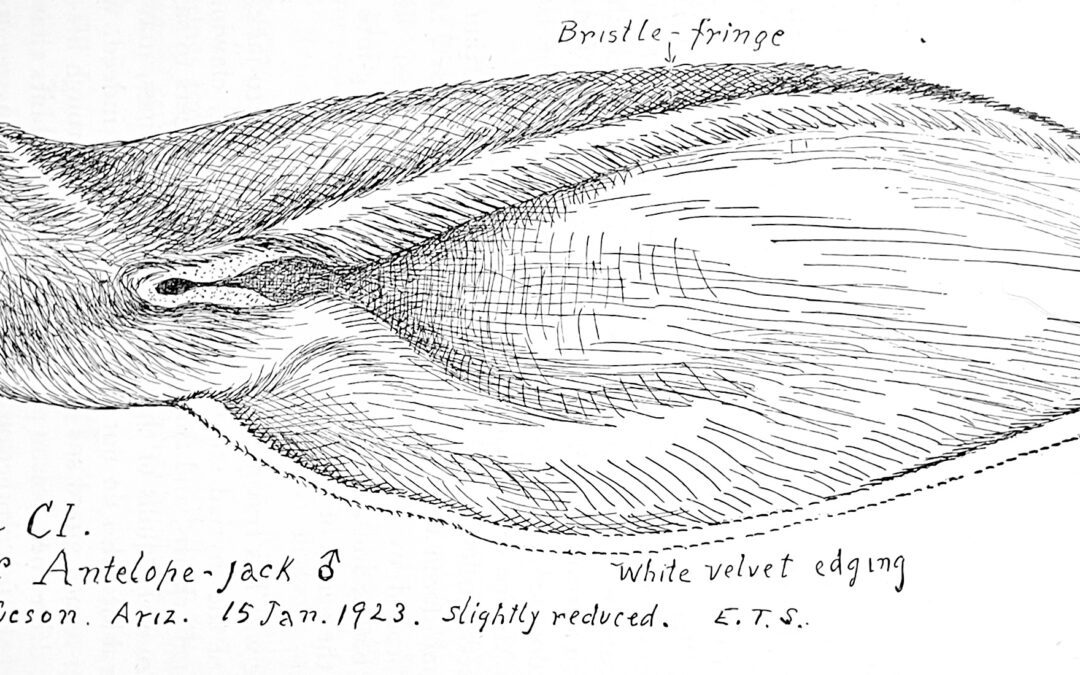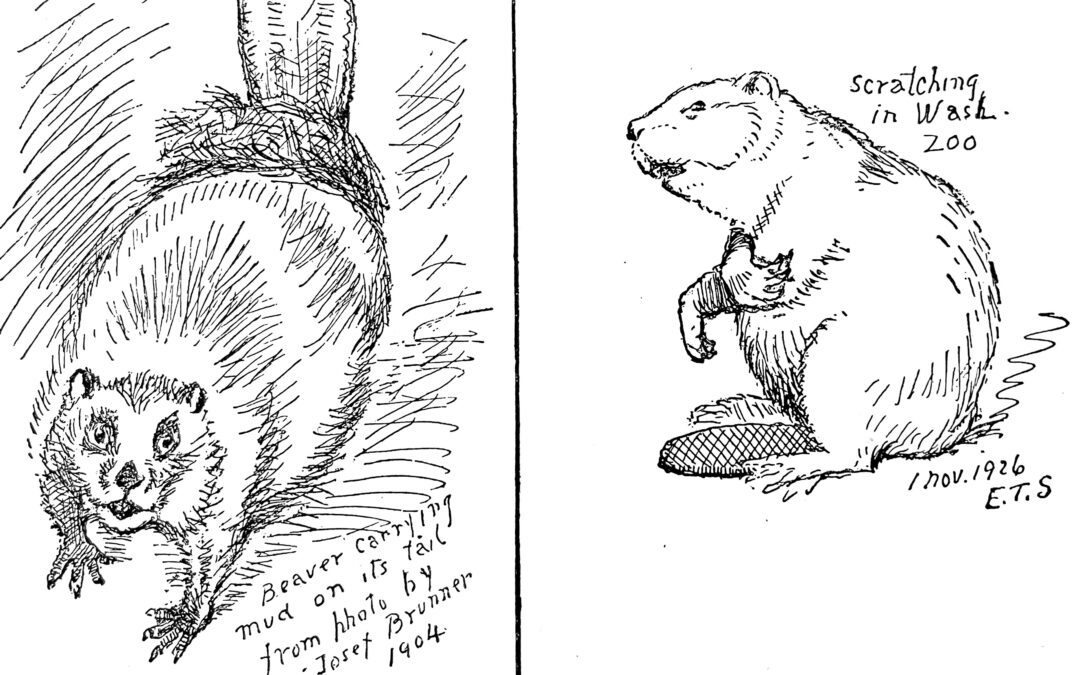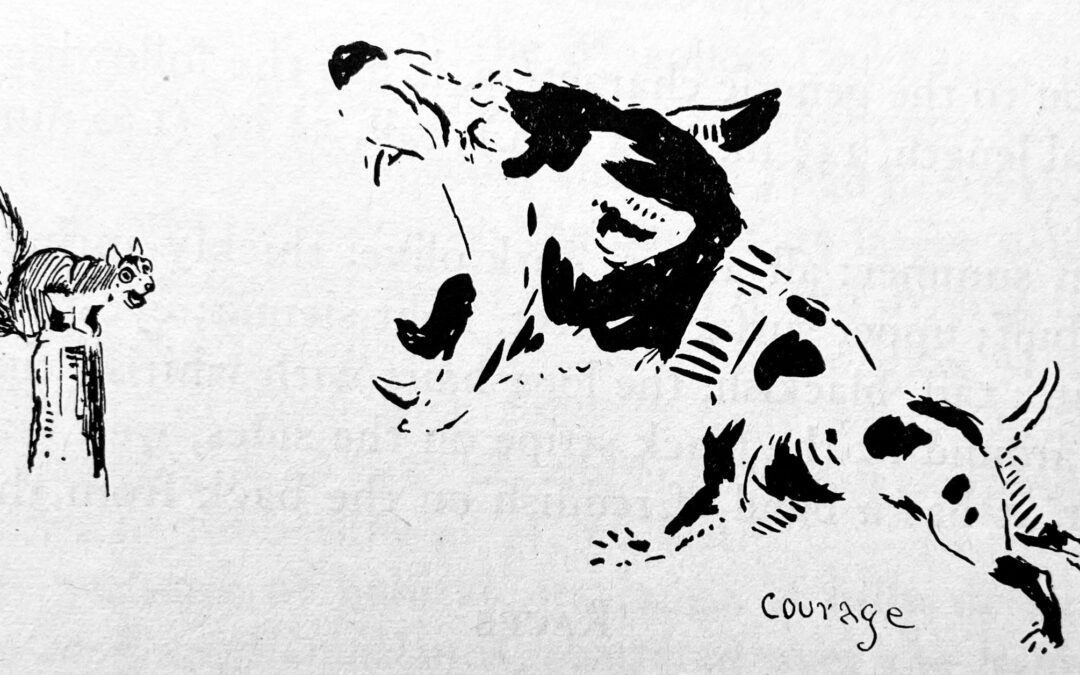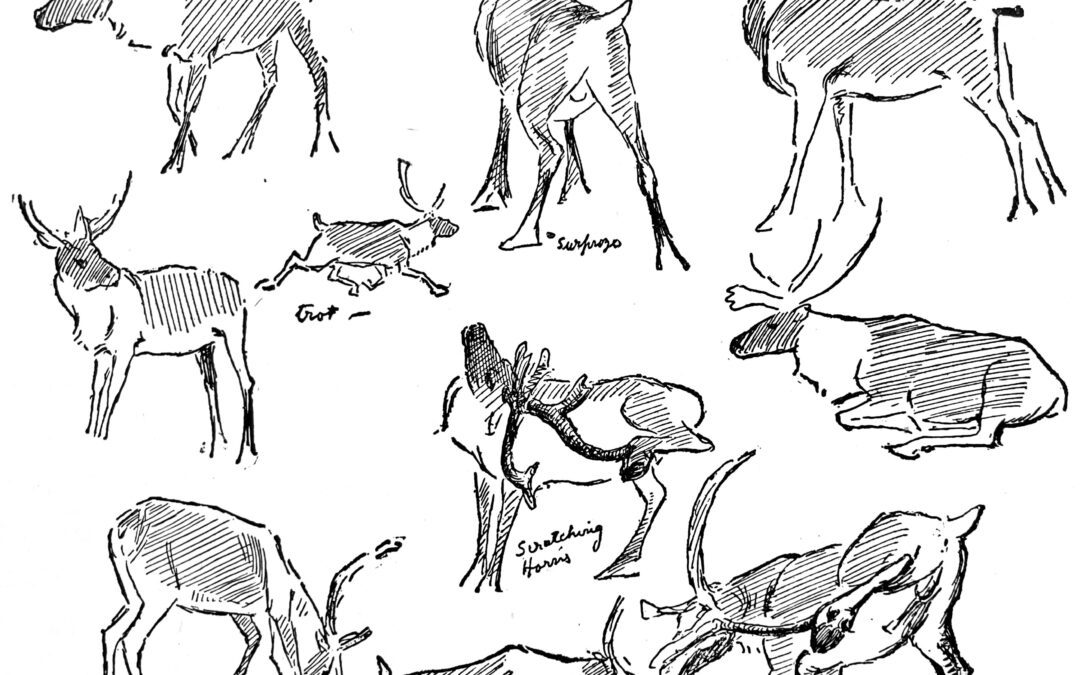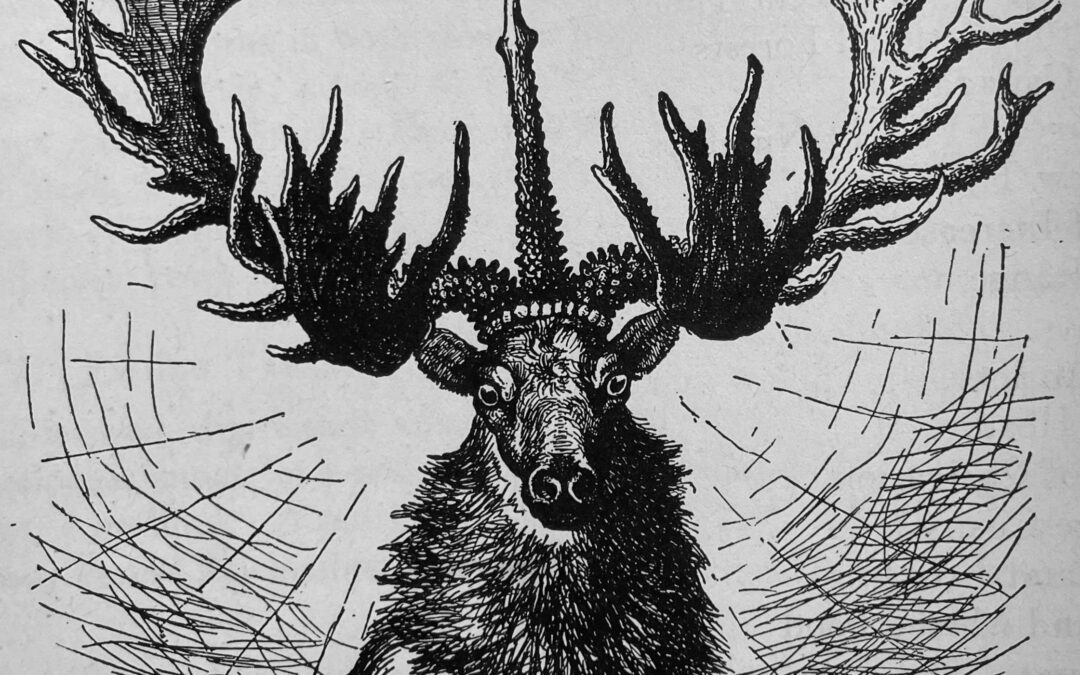
by David L. Witt | Jun 30, 2025 | Seton Essays
Ear of Antelope Jack by Ernest Thompson Seton This is one in an ongoing series of nature essays from Lives of Game Animals (1925-1928) by Ernest Thompson Seton. In this case, the tragedy of the highway. This species—Lupus alleni—lives in Mexico and southern Arizona....

by David L. Witt | Jun 15, 2025 | Seton Essays
Beaver Poses & details by Ernest Thompson Seton This is one in an ongoing series of nature essays from Lives of Game Animals (1925-1928) by Ernest Thompson Seton. If some evening, you are camping out beside a stream or pond in the forested mountain West you might...

by David L. Witt | Jun 12, 2025 | Seton Essays
Courage by Ernest Thompson Seton This is one in an ongoing series of nature essays from Lives of Game Animals (1925-1928) by Ernest Thompson Seton. I have watched them act aggressively towards dogs. Running and jumping from tree to tree, coming down broad trunks...

by David L. Witt | May 31, 2025 | Seton Essays
Sketches of Norway Reindeer by Ernest Thompson Seton Warm Winters, Warmer Summers This is one in an ongoing series of nature essays from Lives of Game Animals (1925-1928) by Ernest Thompson Seton. By the time of Seton’s 1907 trip to the Arctic Prairies (Northwest...

by David L. Witt | May 23, 2025 | Seton Essays
The Wonder Buck by Ernest Thompson Seton This is one in an ongoing series of nature essays from Lives of Game Animals (1925-1928) by Ernest Thompson Seton. Around the time when Seton wrote this, the elk population of New Mexico was down to only a few individuals....
